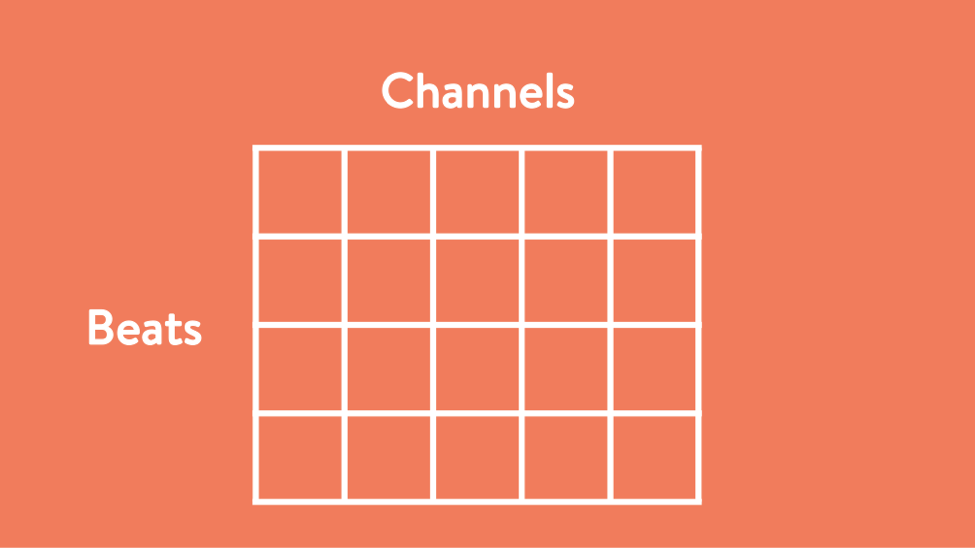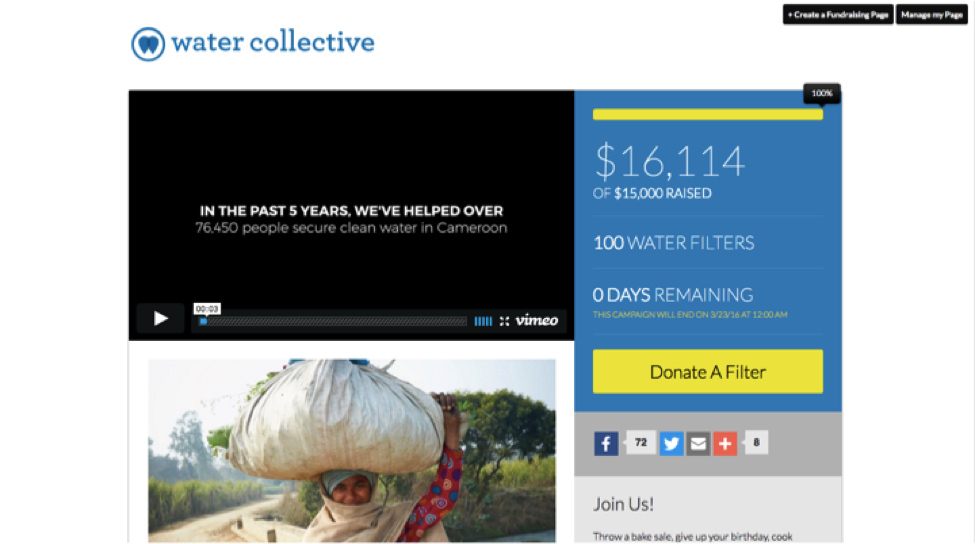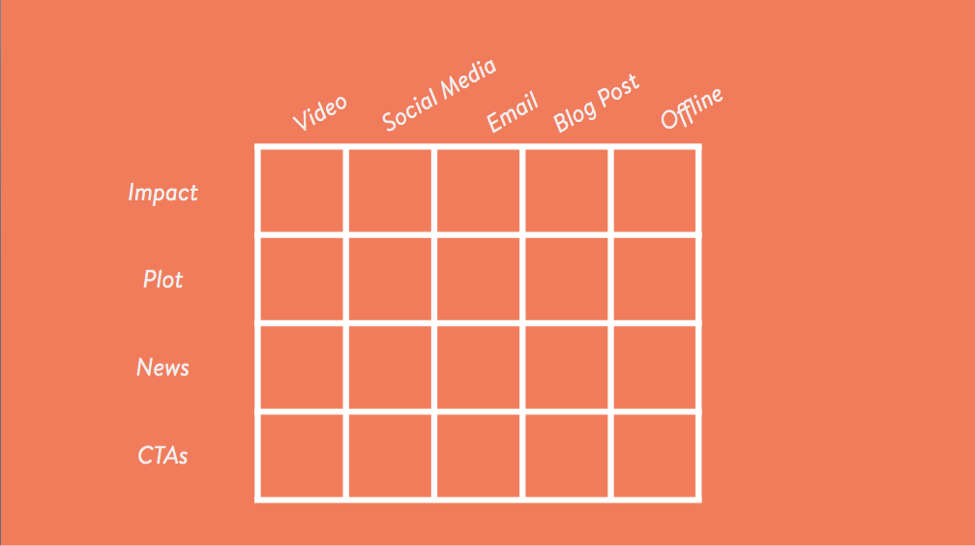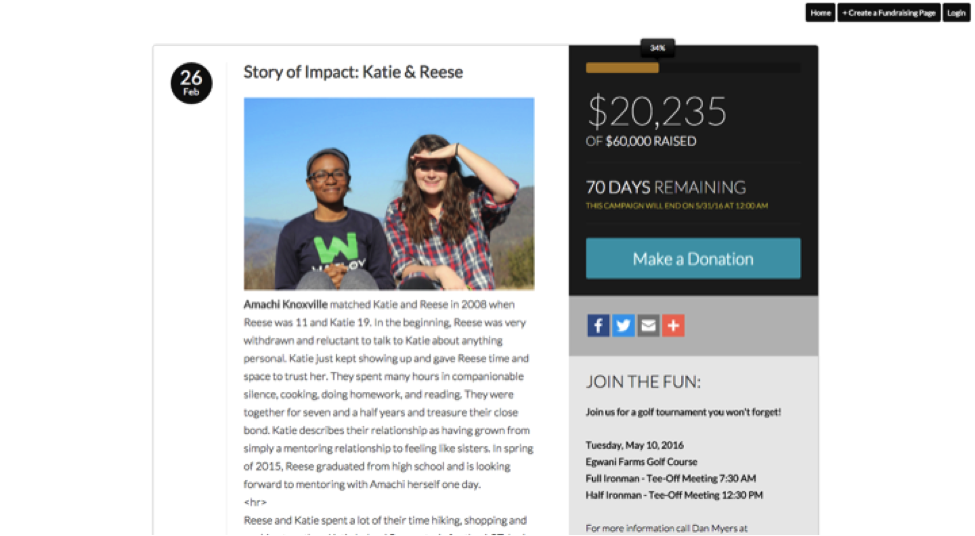Stories have the power to rally individuals and transform communities. Unfortunately, it’s an uphill battle for most nonprofits.
You may be struggling with leveraging stories for your crowdfunding campaign, your bosses may not understand what storytelling is, or maybe you’re just not sure where to start.
There’s a solution!
At 16NTC, we shared how you can master storytelling by creating a Storytelling Grid.

The Storytelling Grid is a framework you can use for storytelling for your crowdfunding campaign. It contains two dimensions: Beat and Channel.
“The Storytelling Grid is a framework you can use for storytelling for your crowdfunding campaign…” tweet this
Let’s take a quick look on how you can use this to navigate your storytelling.
Beats
These are the content themes that you can share as part of stories. Think of this as the content’s substance that you can create and share.
There are four common beats in the Storytelling Grid.
Impact
Impact beats are stories of how your work matters. It shows how your project or programs have been effective and how it has changed the lives of people.

Commonly, these are qualitative personal narratives and testimonials, as well as quantitative data on impact.
Plot
This beat is the narrative of your campaign or cause.
One of the most underutilized storytelling devices is plot. A campaign plot is the sequence of events that includes the characters, conflict, and resolution. By using a plot, you can draw a reader into your campaign on an emotional level, more so than just presenting the problem and your solution.
“By using a plot, you can draw a reader into your campaign on an emotional level…” tweet this
Three common plots include:
- Overcoming the monster – You set out to defeat a deadly force or antagonist that threatens your home and community.
- Rags to riches – You or someone that you help starts out as poor and downtrodden, but rises in the world through wealth, status, love, and more.
- The quest – You and your companions set out to acquire an important object or reach a destination, encountering perils and obstacles along the way.
To learn more about plots and how to use them for crowdfunding campaigns, download our free ebook, Hollywood Storylines for Nonprofit Crowdfunding.
News & Progress
This beat is what is 99% of nonprofit crowdfunding campaigns share. These are updates and recent happenings that are tied to the campaign.
Common news and progress content include:
- Campaign updates (Ex. We’ve raised 50% of our goal or 50 people have joined our campaign)
- Event info (Ex. Our event in next week! Find out more details by going to our campaign site)
- Announcements (Ex. We just found a matching donor that will match all donations this week!)
- Thank yous (Ex. Thank you John and Jane for your donations today)
Call to Actions (CTA)
A call to action is a statement or request for something to happen. It’s typically a verb-oriented and outcome-oriented. Your three typical calls to action for a crowdfunding campaign are:
- Share – Spread the word on social media, email, and in-person.
- Donate – Give to the campaign today.
- Fundraise – Create a personal or team page to be part of the fundraising campaign.
For more detailed tips on crafting calls to action, check out our popular call to action guide.
Channel
Channels are the places that you can tell and distribute your stories.
- Video
- Social Media
- Blog Post
- Offline
For these channels, practice recycling. This means, for whatever story that you create on one channel, you can repurpose and use it for another channel to save time.
Storytelling Grid In Action
Charting out the Beats and Channels gives you a grid of 20 different types of stories that you can tell for your nonprofit’s crowdfunding campaign.

When creating stories for your campaign, what you want to do is match a Beat with a Channel as a way to chart out your stories.
Here are a few examples:
Impact — Blog post

This blog post by the Amachi Foundation shares about how their mentorship program changed lives by pairing a committed mentor with a young vulnerable girl.
With the combination of emotive language and the emphasis on impact, this long-form written blog post creates a compelling story that captures their audience’s attention.
This channel allows the story to have longevity, as it is easily accessible for a long period of time and is relevant throughout their campaign.
Plotline — Video
Becky Straw, the Co-founder of The Adventure Project, shares about how the nonprofit has been working in Kamwenge, Uganda and has made a lot of progress in the video. However, she explains there’s much more work to be done!
She then describes what their journey would look like as they expand their efforts to provide clean water to seven surrounding communities using the “quest” narrative.
The medium of video allows her to connect with the audience personally, while also giving her the opportunity to extend an invitation the viewer to join the quest to provide clean water.
Impact — Social Media
The Water Collective chose to share their story of impact with their followers on social media. In this short but powerful post, the organization makes the donor the hero of the cause while also sharing a picture that depicts what the nonprofit has accomplished.
By posting this story on Facebook, it has the advantage of being easily shareable and attention grabbing.
CTAs — Email

In this email, The Adventure Project is directly asking their audience to act, as a follow up to their video post (which focused around plot).
Knowing that they had already raised awareness about their campaign, they decided to encourage their audience to act via email-which is a preferred form of contact for among millennials and their target audience.
News — Social Media
With this social media post, the Water Collective has decided to thank their supporters and also let their audience know they only have a few hours left to donate.
By posting on social media, The Water Collective’s story is able to reach a younger audience (who are most likely to donate through a crowdfunding campaign) very quickly, so word has time to spread before the clock strikes 12.
The storytelling grid allows you to take into account the themes and distribution channels of a story before you write it so that you’re able to make the most out of your nonprofit’s stories for your crowdfunding campaign.




